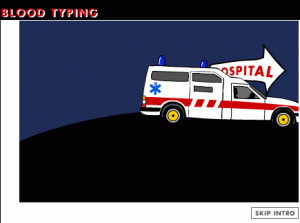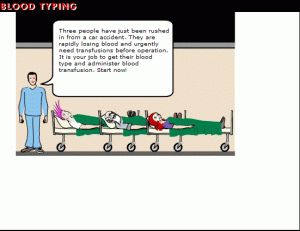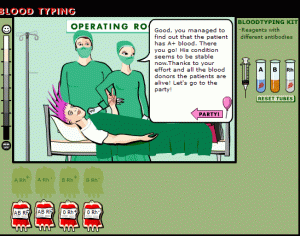Saturday, November 22, 2008
Example of Game-based Learning
Labels: Game Based Learning, Interactive Content
Head over to his blog to see the full post.
Friday, November 21, 2008
Call for Peer Review
Labels: Connectivism, Peer Review
It’s been a great experience reading through all your posts on eCube. I am part of the CCK08 experience - a massively online course on the new learning theory of Connectivism.
As I was thinking about what I should try and do for the final project submission, I thought that a real way of assessing the nature, diversity and strength of my network was to reach out to my peers and request them to review one of my papers. I believe this will be useful from a variety of perspectives. Not only will I be able to receive honest and blunt critique of my contribution, but it will be a good way of evaluating how a peer review process would really work in a network of this kind.
I would really appreciate it if you could spare sometime providing a peer review for my Paper 2 : Changing Roles.
I know it is short notice and may be too much to ask given your own schedule and priorities or that you may not be interested. Do please feel free to not participate in this peer review. Let me know in any case.
If you do decide to participate in the peer review, here are some details:
- The project submission is due end November. I know this would be a very short timeframe for you to respond, but I will be glad if you can provide a review by November 27th.
- Review parameters: I am replicating a marking scheme that has been used by George Siemens which I think should be a good starting point. However, please feel free to suggest any other criteria that you would like the review to be based on.
- The link to the paper is at: http://learnoscck08.wordpress.com/2008/11/01/cck08-paper-2-changing-roles/ and it is titled CCK08: Paper 2 – Changing Roles.
- I will make available results from all reviewers on my blog (http://learnoscck08.wordpress.com) as part of the final project submission.
- My email is viplav.baxi@servitium.com
Assignment: Paper 2 Learner: Viplav Baxi Marker: Date: Marking Criteria:
Grade: Comments: |
Saturday, November 15, 2008
6 Quick Steps to Create a Game Based E-learning Course
Labels: Game Based Learning, Interactive Content, Tips
This post is written by Rupa Rajagopalan
If you play a lot of games, you will definitely be able to identify the standard pattern used.
In games you can skip things and start with the main activity. It is never mandatory to go through a game in a linear fashion.
For example in games, the introduction can be skipped and also the help section can be skipped. Of course you cannot skip levels in a game because that is the challenge in the game. It sustains interest and motivates the gamer to clear each level to see what comes next J However you can play some levels of a game, exit and then start from the same level where you left.
Using game concepts in learning will definitely engage and interest the learner.
Instead of giving lectures and lessons on a subject, try presenting the subject as a problem or an activity to the learner and allow him to solve the problem or participate in the activity. Learning must happen as the learner tries to solve the problem or indulges in the activity.
I will use the game called Blood Typing (http://nobelprize.org/educational_games/medicine/landsteiner/)for illustration purpose.
Now here are the steps to create a game based e-learning course:
Start with a story/scenario
I have played an umpteen number of games and I have seen that every game starts with a story.
The story may be presented as a dialogue between two people or as a sequence of events with no dialogues or may be just visuals and no text.
The Blood Typing game begines with visuals of ambulance rushing to a hospital.

End the story with a problem and invite the learner to solve it
In most games the gamer takes over where the story ends, as in he gets to know the background story and then take charge to solve the problem.
In the Blood Typing game you have a talking head inviting the gamer to get the patient’s blood type and transfuse blood.

Guide the learner
All games help you with the list of controls you use to play the game. Some games have too many controls. There are some other games which require simple mouse clicks.
You can choose how you want the learner to play the game. But make sure that you explain to the learner how he/she has to play the game.
Some games give instructions in the form of written text and some others have a guided tutorial where you play the first level of the game with assistance.
In the Blood Typing game, you have a help section that tells you how to play the game.
Include Incentives and Rewards
Feedback, rewards, incentives motivate gamers to play the game further. I have played many games where you earn points and buy some boosters for the game for the points earned.
In e-learning, rewards will motivate the learner to explore and learn more.
In the Blood Typing game when you correctly transfuse blood, you get words of acknowledgement and encouragement.

Increase the challenge gradually
Every game gets interesting as it proceeds. A game starts at a basic level and proceeds to advanced levels. You master the game as you clear each level.
Coming to e-learning, get the learner started with a basic level activity or problem and increase the difficulty levels as the learner clears each level.
In the Blood Typing game, while treating each patient you have 3 levels of challenge.
Include Trial and Error
If the learner fails to successfully complete a level, he/she must be given another chance or umpteen chances till he/she actually succeeds. If the learner fails at level 2, he should be allowed to play the level again and not start from level 1.
The Blood Typing game allows you to repeat steps to do the blood transfusion right.
Now it is your turn. Have you worked on a game based e-learning course? If so please share your experiences.
How to Know your Audience
- Connect with potential audience on professional networking sites. Lurk around to see what questions get asked and what answers the audience finds useful. Don't be afraid to ask your own questions.
- Connect with training managers and trainers and try to understand their pain areas. Build your network of training professionals in different domains. This will help you gain a better understanding of the training function and your conversations with your client stakeholders will be more meaningful if you already have some understanding of the function and pain areas.
- To better understand your audience culturally (and this is probably more relevant for Indian instructional designers and tech writers creating content for western audience) watch movies and western television, read journals and magazines, read business books. With the Internet you have access to many of these free and you should leverage these sources to better understand your audience. Investing a little in books is investing your own skills.
- Try to develop a business mindset. Remember you are developing content to solve a business problem. Try to identify what business problems your stakeholders are trying to solve.
- Develop an understanding of how the training will be delivered and build solutions that will leverage the environment in which training will be delivered. Use the Internet to stay up to date with various LMS. You don't have to know the technical details but you should develop a better understand as a user of the LMS.
- Stay up to date with technology and trends in the domain area. For example, if you are creating content on technology topics, you should be aware of the new software releases and other trends in that technology area.
Today's technology and sociological changes have made it easier for instructional designers to better engage their audience and stakeholders. Leverage these mechanisms to continually connect and network with similar audience and stakeholders even if you don't have access to specific audience for your content project.
Friday, November 7, 2008
Announcing eCube Community Site
Register now and join the community. Set up your profile to share your interest and skills.
.
.
.



